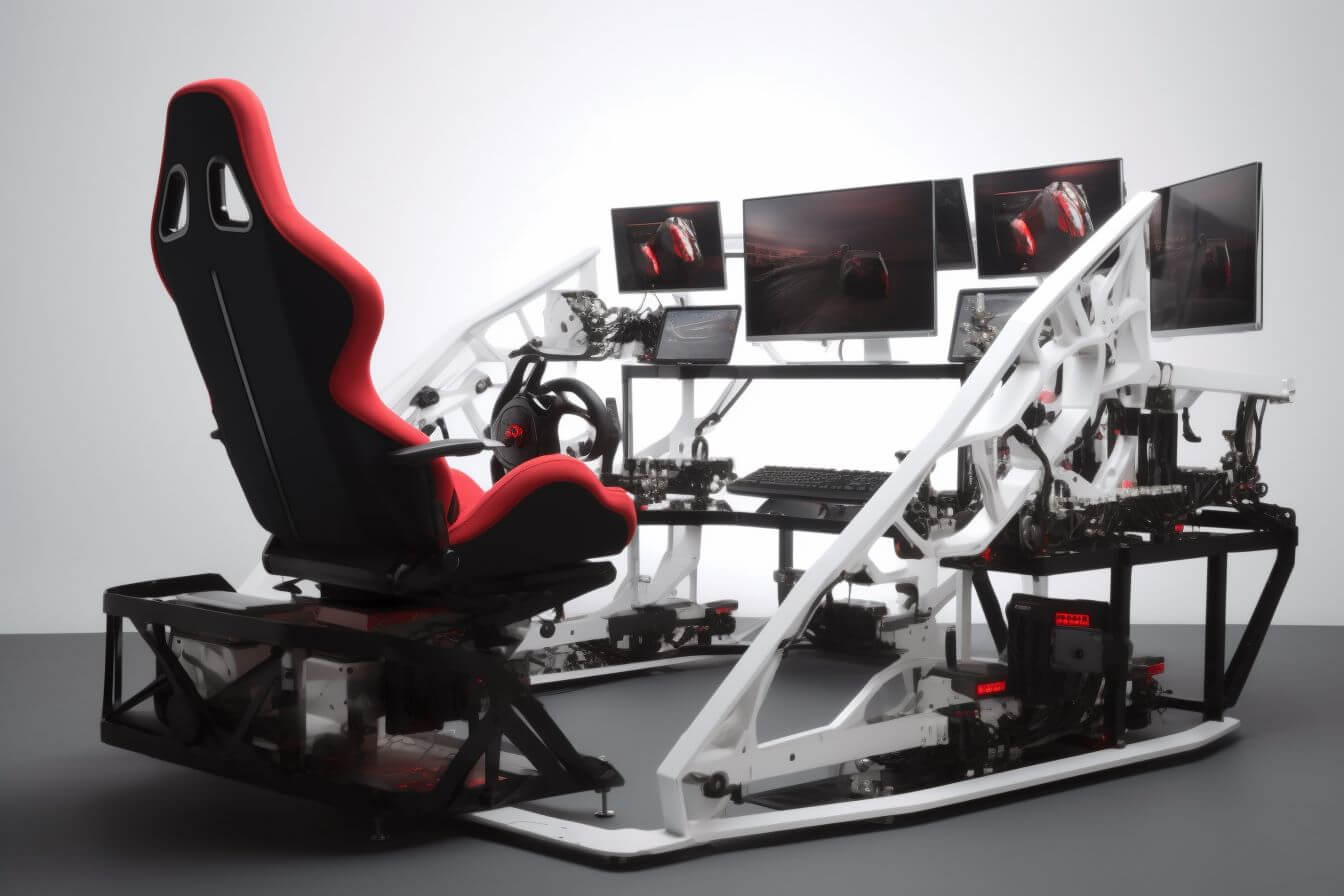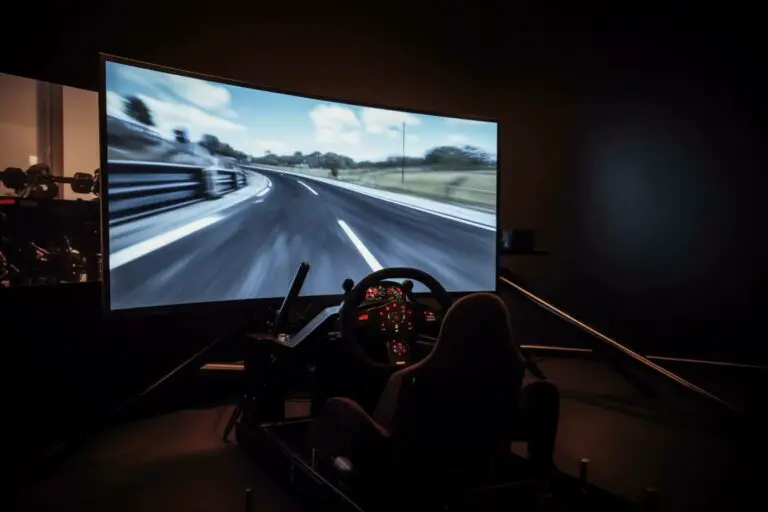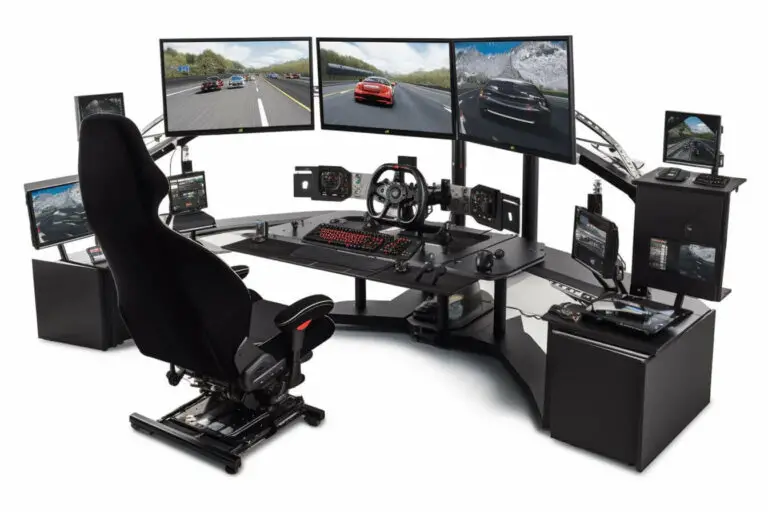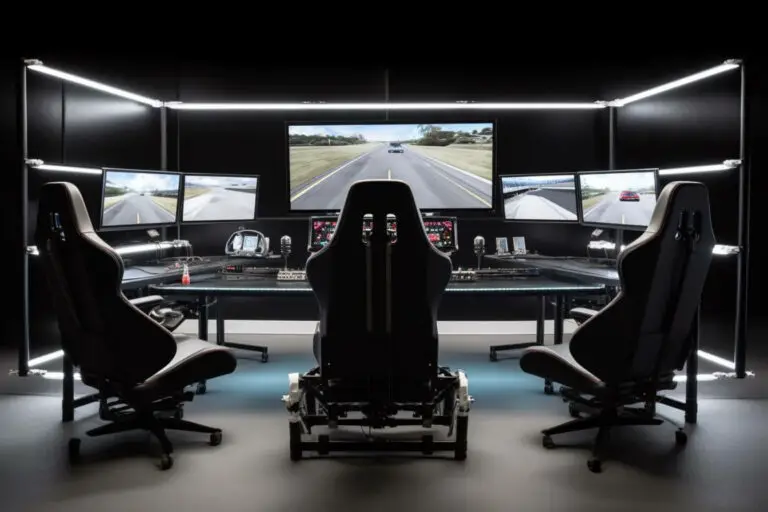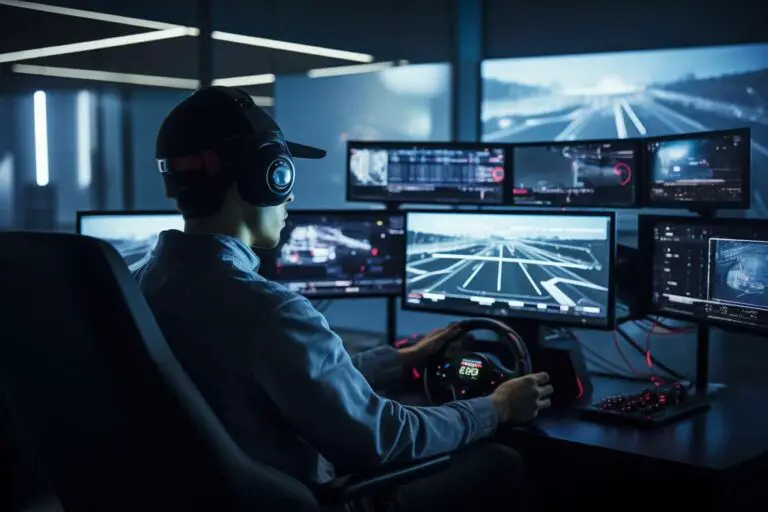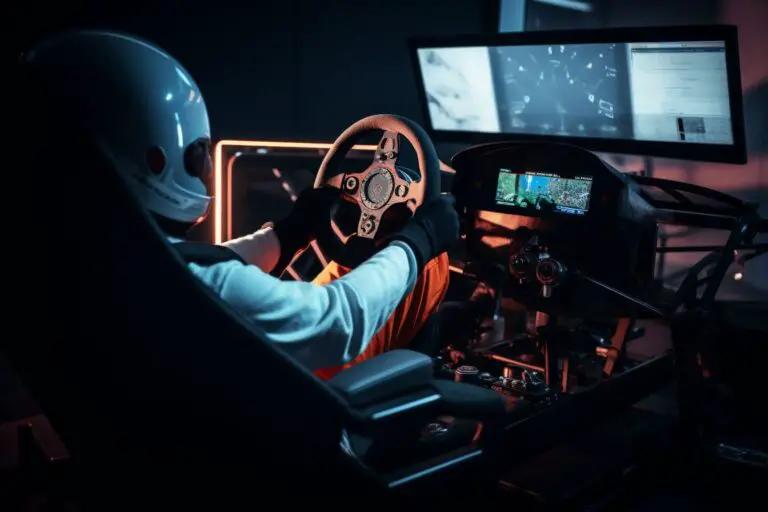Which Driving Aids Can Help You Become A Faster Sim Racer?
- Which Driving Aids Can Help You Become A Faster Sim Racer?
- Utilizing Racing Lines For Optimal Cornering
- Implementing Traction Control Systems
- Mastering The Art Of Abs And Brake Balance
- Fine-Tuning Steering Assistance
- Harnessing The Power Of Telemetry Data
- Leveraging Virtual Coaching Tools
- Exploring Advanced Racing Simulators For Skill Development
- Frequently Asked Questions
- How Can I Improve My Throttle Control To Maintain Better Stability In High-Speed Corners?
- Are There Specific Car Setup Adjustments That Can Help Me Become A Faster Sim Racer, Such As Suspension Or Aerodynamic Settings?
- Which Aspects Of My Driving Style Should I Focus On To Maximize My Performance In Different Types Of Race Scenarios, Like Overtaking Or Defending My Position?
- How Can I Better Manage Tire Wear And Fuel Consumption During Longer Races To Maintain A Competitive Pace Throughout The Entire Event?
- Are There Any Recommended Drills Or Practice Routines That Can Help Me Develop My Skills And Consistency In Various Racing Situations?
- Conclusion
As a sim racer, you’re always on the lookout for ways to improve your skills and become faster around the track. It’s no secret that practice makes perfect, but what if there were driving aids available to help you shave those extra seconds off your lap time?
Well, good news – there are! In this article, we’ll explore some of the top driving aids designed to help you put the pedal to the metal with more confidence and precision.
You might be thinking that using driving aids is sort of ‘cheating’ or takes away from the challenge. However, it’s important to remember that even real-world professional racers use various forms of assistance during training sessions and races. So why not take advantage of these tools in your quest to become a faster sim racer?
Let’s dive into which driving aids can make a difference in your virtual racing career.
Other Interesting Articles to improve your Sim Racing Techniques
How To Improve Your Sim Racing Lap Times: Shave Seconds Off Your Lap Time
What Are the Top Techniques to Master Corners in Sim Racing?
How Can I Optimize My Car Setup for Faster Lap Times in Sim Racing?
Discover the Insider Tips for Smoother Braking and Acceleration in Sim Racing
How to Consistently Hit the Perfect Racing Line for Ultimate Speed
What Can You Learn from Pro Sim Racers to Boost Your Performance?
Uncover the Mental Strategies to Stay Focused and Improve Your Sim Racing Skills
How to Analyze Telemetry Data to Unlock Your Full Sim Racing Potential
How to Train Your Way to Sim Racing Greatness: Tips, Tricks, and Techniques
Utilizing Racing Lines For Optimal Cornering
Picture this: you’re driving down a scenic road, enjoying the twists and turns that challenge your skills behind the wheel. As you approach each bend in the road, instinctively, you search for the perfect line – that seamless arc that allows you to maintain speed without losing control of your vehicle.
This scenario is not just applicable to real-world driving but also to sim racing, where utilizing racing lines can make a significant difference in improving lap times and overall performance.
Racing lines are an essential part of any driver’s arsenal when it comes to mastering cornering techniques. By following these optimal paths through corners, drivers can minimize tire wear, increase exit speeds, and ultimately shave precious seconds off their lap times.
To find the ideal racing line, one must consider factors such as braking points, turn-in points, apexes (the point at which you’re closest to the inside edge of a corner), track conditions, and even car setup.
Mastering racing lines requires practice and patience; however, once mastered they become invaluable tools on race day. Sim racers should dedicate time during practice sessions to experiment with different approaches to corners and identify what works best for them based on their unique driving style and car setup preferences.
Through trial and error combined with observation of more experienced drivers’ strategies or onboard camera footage from professional races analysis will help develop better understanding of effective racing lines execution leading towards faster lap times consistently achieved by skilled sim racers around the world.
Implementing Traction Control Systems
Having learned about the importance of racing lines for optimal cornering, it’s time to delve deeper into other driving aids that can help you become a faster sim racer.
Traction control systems are an essential aspect when it comes to improving your performance on the virtual track. In this section, we will discuss how implementing traction control systems in your simulation setup can lead to better lap times and overall race results.
Traction control systems work by modulating power delivery to the wheels, preventing them from spinning out under hard acceleration or during corner exits.
Here are three key benefits of using traction control in sim racing:
- Enhanced Stability: By managing wheel spin, traction control maintains grip between tires and the road surface. This minimizes sudden losses of adhesion that could cause spins or slides.
- Improved Acceleration: With reduced wheelspin, more engine torque is transferred to forward motion rather than being wasted through excessive tire slip; thus accelerating more efficiently.
- Consistent Lap Times: When used correctly, traction control allows drivers to push their car harder without having to worry as much about losing control – leading to greater consistency in lap times.
As you continue developing your skills as a sim racer, consider experimenting with different levels of traction control assistance within your chosen simulator software. Some may prefer minimal intervention for a more realistic experience while others might opt for maximum support until they feel confident enough behind the wheel.
Regardless of personal preferences, remember that these tools exist not only for safety but also as learning resources designed specifically for helping racers improve their abilities over time.
Embracing technology like traction control systems ultimately empowers drivers seeking progress towards becoming faster and more consistent competitors on any virtual circuit.
Mastering The Art Of Abs And Brake Balance
Mastering the art of ABS and brake balance in sim racing can be compared to learning a graceful dance; it’s all about finding the perfect harmony between control and speed. As you practice, these driving aids will begin to feel like second nature, allowing you to achieve faster lap times with ease. Both ABS (Anti-lock Braking System) and adjusting your brake balance are crucial components that contribute to improved braking performance.
Understanding how ABS functions is vital for any aspiring sim racer aiming for better lap times. The Anti-lock Braking System prevents wheels from locking up during heavy braking, enabling them to maintain traction with the road surface. This system ensures optimal stopping distances while maintaining control over your car when entering corners. On the other hand, managing your brake balance allows you to fine-tune your vehicle’s handling characteristics under braking. By altering the distribution of brake force between the front and rear axles, you can optimize stability on corner entry or avoid excessive weight transfer onto one end of the car.
| ABS Setting | Brake Balance |
|---|---|
| High | More Front |
| Medium | Neutral |
| Low | More Rear |
Experimenting with these settings can lead to significant improvements in your racecraft as well as overall speed on track. Remember that every driver has their unique style and preferences, so don’t hesitate to test various setups until you find what suits you best. With time, dedication, and perseverance, mastering these driving aids will allow you to glide through those tricky corners like a pro, giving you the edge needed to become a formidable sim racer.
Fine-Tuning Steering Assistance
One crucial driving aid that can help you become a faster sim racer is fine-tuning steering assistance. Steering assistance helps to correct your inputs, making it easier for you to navigate through corners and maintain control of your car. By adjusting the level of assistance, you can find the perfect balance between having full control over your vehicle while still receiving some guidance from the software.
To begin with, experiment by adjusting the steering sensitivity settings in your simulator. This allows you to determine how much input from your wheel or controller is needed to turn the virtual car effectively. Some players may prefer higher sensitivity, which requires less movement to achieve sharp turns, while others might opt for lower sensitivity that provides smoother transitions around curves.
It’s essential to spend time discovering what works best for your personal preferences and skill level so that you feel confident during races. As you gain more experience in sim racing and develop better handling techniques, consider decreasing the level of steering assistance gradually. This will allow you greater autonomy when controlling your vehicle on the track and enable you to refine your skills further.
Remember, practice makes perfect – so dedicate time to honing these newfound abilities without relying too heavily on driving aids like steering assistance. The ultimate goal should be achieving faster lap times and improved overall performance while maintaining complete command over your racecar at all times.
Harnessing The Power Of Telemetry Data
Having explored how fine-tuning steering assistance can make a difference in your sim racing performance, let’s delve into another valuable tool: telemetry data.
Telemetry is the collection of detailed information about your vehicle and its behavior as you drive around the track. By harnessing this data, you can find areas of improvement that might not be apparent from just driving alone.
Picture this scenario: You’ve been struggling to shave off those last few tenths from your lap time at Spa-Francorchamps, one of the most iconic circuits in sim racing. After spending countless hours practicing and tweaking setups, it seems like there’s no more room for improvement – until you start analyzing your telemetry data.
Upon review, it becomes evident that you are losing significant speed through Eau Rouge and Raidillon due to suboptimal throttle control and poor weight transfer management. Armed with this new knowledge, you focus on these problem areas during practice sessions and eventually manage to improve by over half a second per lap.
Leveraging telemetry data allows drivers to pinpoint specific issues impacting their performance throughout various sections of the track. This level of insight enables racers to identify crucial aspects such as optimal braking points, ideal gear changes, suspension settings adjustments or even identifying when tire wear starts affecting grip levels significantly.
As a result, utilizing telemetry effectively leads to improved racecraft and consistency across different tracks – ultimately helping sim racers become faster competitors overall. So go ahead and dive deep into the world of telemetry analysis; it could be just what you need to unlock your full potential behind the wheel!
Leveraging Virtual Coaching Tools
One of the most effective ways to become a faster sim racer is by leveraging virtual coaching tools. These tools are designed to analyze your driving performance and provide personalized feedback on areas that need improvement.
There are several types of virtual coaching tools available, ranging from telemetry analysis software to in-game driver coaches. By using these resources, you can identify weaknesses in your driving technique and make adjustments accordingly.
Telemetry analysis software lets you dive deep into data collected during each lap, such as speed, throttle input, braking points, steering angles, and more. Analyzing this information helps pinpoint specific sections of the track where you may be losing time or underperforming. Some popular telemetry programs include MoTeC i2 Pro, RaceRender 3, and Virtual Racing School (VRS). Additionally, many racing games have built-in telemetry systems that offer real-time feedback while you’re on the track.
Another valuable tool for improving your sim racing skills is an in-game driver coach. Many modern racing titles feature AI-driven instructors who observe your laps and provide suggestions on how to improve certain aspects of your driving style. For instance, they might point out if you’re taking a corner too wide or if you should be applying more brake pressure at particular braking zones.
These virtual coaching aids can significantly enhance your learning curve and help you become a much quicker sim racer without resorting to trial-and-error methods alone. Remember always to practice regularly with these tools so that improvements become ingrained habits over time – ultimately leading to better overall performance on the race track.
Exploring Advanced Racing Simulators For Skill Development
Having delved into the world of virtual coaching tools, it’s clear that there is a vast array of resources available to help you improve your sim racing skills. However, these are not the only aids at your disposal.
Another effective way to become a faster and more skilled racer is by utilizing various driving aids designed specifically for this purpose. Electronic driving aids can significantly enhance your performance on the track by providing real-time feedback and assistance during races.
Some popular examples include traction control systems (TCS), which prevent wheelspin and maintain optimal grip; anti-lock braking systems (ABS) that allow you to brake hard without locking up the wheels; as well as stability control programs like electronic stability control (ESC). These advanced technologies work together to optimize car handling, enabling you to push your limits while maintaining full control of your vehicle.
As you progress in skill level, advanced racing simulators offer an immersive experience that closely replicates real-world conditions. By integrating cutting-edge motion platforms, high-quality force-feedback steering systems, and ultra-realistic audio-visual setups, these state-of-the-art simulators provide invaluable opportunities for drivers who want to hone their abilities outside of traditional practice sessions or race weekends.
In essence, investing time and effort in mastering such technologically advanced equipment will undoubtedly contribute towards transforming you into a formidable sim racer with unparalleled speed and precision.
Frequently Asked Questions
How Can I Improve My Throttle Control To Maintain Better Stability In High-Speed Corners?
Throttle control is like walking on a tightrope, teetering between stability and chaos as you navigate high-speed corners in sim racing.
To improve throttle control and maintain better stability, practice progressive application of the accelerator, gradually increasing pressure instead of slamming it down. This helps prevent wheel spin and loss of traction.
Additionally, pay attention to your car’s weight transfer during cornering; easing off the throttle smoothly allows for optimal grip levels without unsettling the balance.
Utilize telemetry data to fine-tune your inputs and analyze areas that need improvement. Remember, mastering throttle control takes time and consistent practice, but with dedication, you’ll soon conquer those challenging high-speed bends with finesse.
Are There Specific Car Setup Adjustments That Can Help Me Become A Faster Sim Racer, Such As Suspension Or Aerodynamic Settings?
Yes, specific car setup adjustments can greatly contribute to becoming a faster sim racer.
Focusing on suspension settings like spring rates, ride height, and dampers can help improve handling and stability in various track conditions.
Additionally, adjusting aerodynamic elements such as downforce levels and wing angles can optimize the balance between straight-line speed and cornering grip.
Experiment with different setups for each car and track combination to find what works best for your driving style while ensuring you have a strong understanding of how these changes affect the vehicle’s performance.
Remember that improving your skills as a driver goes hand-in-hand with fine-tuning your car’s setup to achieve the fastest lap times possible.
Which Aspects Of My Driving Style Should I Focus On To Maximize My Performance In Different Types Of Race Scenarios, Like Overtaking Or Defending My Position?
Ah, the quest for speed and glory! To truly maximize your performance in various racing scenarios such as overtaking or defending your position, you must embrace the art of adapting your driving style.
Focus on mastering techniques like late braking to close gaps quickly, trail braking to maintain cornering speeds, and smoothly modulating throttle and steering inputs to optimize traction.
Improve situational awareness by studying track layouts and anticipating rivals’ moves, allowing you to execute well-timed block passes or aggressive counterattacks.
Finally, learn the delicate dance of slipstreaming (drafting) behind opponents as if they were merely pawns in your grand strategic chess game – all while keeping an eye out for that perfect moment when victory is yours for the taking.
Balancing aggression with finesse will ultimately elevate your sim racing prowess beyond mere mortals who rely solely on driving aids for their fleeting moments of triumph.
How Can I Better Manage Tire Wear And Fuel Consumption During Longer Races To Maintain A Competitive Pace Throughout The Entire Event?
To better manage tire wear and fuel consumption during longer races, it’s essential to adopt a strategic approach that balances aggressiveness with conservation.
Focus on smooth driving techniques such as gradual acceleration and braking, avoiding sudden movements that can cause excessive tire wear or increased fuel usage. Additionally, be mindful of your racing line and cornering speeds to reduce the stress placed on tires.
In terms of fuel management, consider lifting off the throttle slightly before corners instead of hard braking and modulating throttle input throughout the race to conserve fuel without sacrificing overall pace. Furthermore, monitor your car’s telemetry data to track tire temperatures and fuel levels, allowing you to make informed decisions about pit stops and strategy adjustments as needed.
By incorporating these methods into your racing style, you can maintain a competitive pace while preserving resources for the entire event.
Are There Any Recommended Drills Or Practice Routines That Can Help Me Develop My Skills And Consistency In Various Racing Situations?
Did you know that consistent practice can improve a sim racer’s lap times by up to 20%?
To develop your skills and consistency in various racing situations, it’s crucial to establish a routine with specific drills. One effective method is to break down each track into sections and focus on mastering one segment at a time.
Practice hitting the ideal racing line, braking points, and throttle application for each corner or sequence of corners. Additionally, try running longer stints at varying fuel loads and tire wear levels to simulate different race scenarios.
Don’t forget to monitor your lap times and analyze telemetry data to identify areas for improvement, as this will help fine-tune your performance on the virtual racetrack.
Conclusion
In conclusion, becoming a faster sim racer involves mastering various aspects of driving and car setup. Focusing on throttle control, adjusting suspension and aerodynamics, adapting your driving style to different scenarios, managing tire wear and fuel consumption are all crucial elements for success.
Have you tried any drills or practice routines that helped improve your performance?
Remember, it’s essential to continuously work on developing your skills and consistency in order to truly excel in the world of sim racing.

